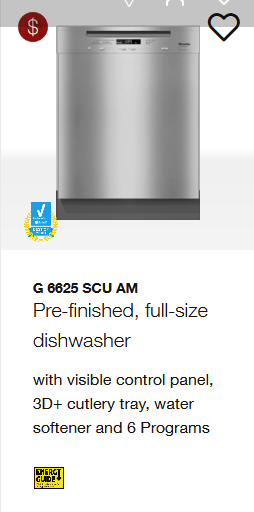The Bubble Bandit products arrived yesterday and gave all three a try this morning.
Dishwasher Detergent: Very disappointed! Pieces shown are all All-Clad. 4-qt. saucepan and lid used to make long-grain rice. The large, deep sauté pan browned hamburger and onions for a hotdish.
Instructions say to put 2-tablespoons (2-tablespoon plastic scoop included) in the main wash cup. Add 1 tablespoon (1/2 scoop) in first wash compartment for heavily soiled loads. I put 3/4 of the scoop in the main wash cup and and the rest in the 1st wash cup.
Used the 1-hour cycle as I always do. Have softened water.
Other things in the load—dishes, glasses, silverware, stainless steel cake pan used to bake hotdish came out fine, but the All-Clad pieces did not. The saucepan has red rust marks inside and the starch lines on the outside of the pan from pouring the contents into a storage container weren’t budged a bit.
I’ve never had these poor results using Member’s Mark pacs or Cascade Platinum pacs.
Bob, I know you pack your dishwasher full, don’t pre-rinse and never pre-scrub pans. Do you have problems with the cleaning ability of Bubble Bandit on pots/pans?
Did a huge load of white towels with 2 tablespoons laundry powder and 2 tablespoons all-fabric bleach. Didn’t notice any problems with cleaning.
Will give Bubble Bandit dishwasher detergent a few more tries. If performance doesn’t improve, it’ s back to pods/pacs for me.
Photo is upside down!

Dishwasher Detergent: Very disappointed! Pieces shown are all All-Clad. 4-qt. saucepan and lid used to make long-grain rice. The large, deep sauté pan browned hamburger and onions for a hotdish.
Instructions say to put 2-tablespoons (2-tablespoon plastic scoop included) in the main wash cup. Add 1 tablespoon (1/2 scoop) in first wash compartment for heavily soiled loads. I put 3/4 of the scoop in the main wash cup and and the rest in the 1st wash cup.
Used the 1-hour cycle as I always do. Have softened water.
Other things in the load—dishes, glasses, silverware, stainless steel cake pan used to bake hotdish came out fine, but the All-Clad pieces did not. The saucepan has red rust marks inside and the starch lines on the outside of the pan from pouring the contents into a storage container weren’t budged a bit.
I’ve never had these poor results using Member’s Mark pacs or Cascade Platinum pacs.
Bob, I know you pack your dishwasher full, don’t pre-rinse and never pre-scrub pans. Do you have problems with the cleaning ability of Bubble Bandit on pots/pans?
Did a huge load of white towels with 2 tablespoons laundry powder and 2 tablespoons all-fabric bleach. Didn’t notice any problems with cleaning.
Will give Bubble Bandit dishwasher detergent a few more tries. If performance doesn’t improve, it’ s back to pods/pacs for me.
Photo is upside down!





